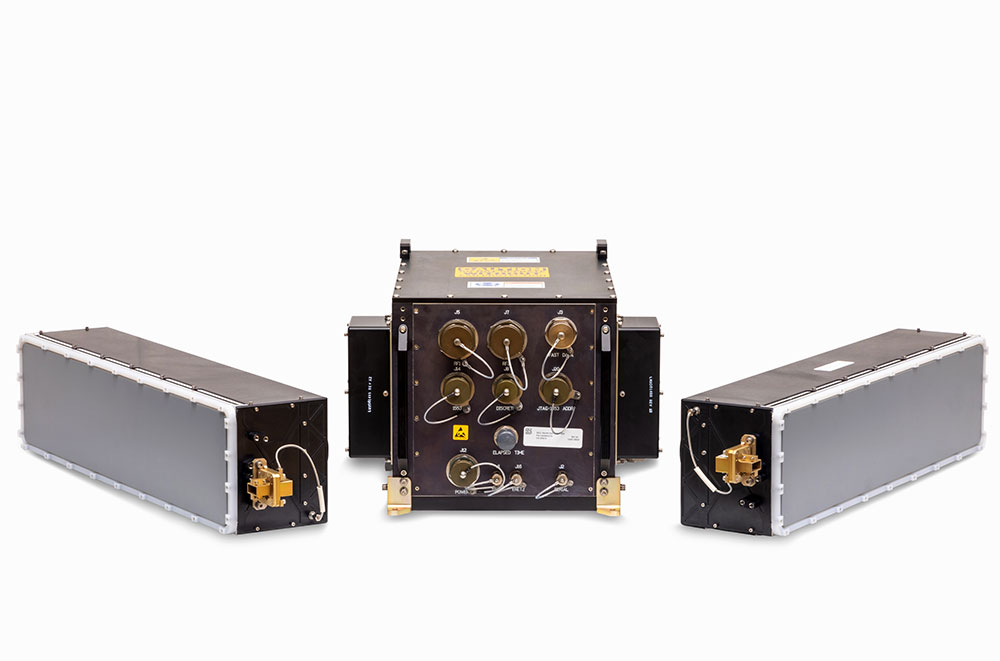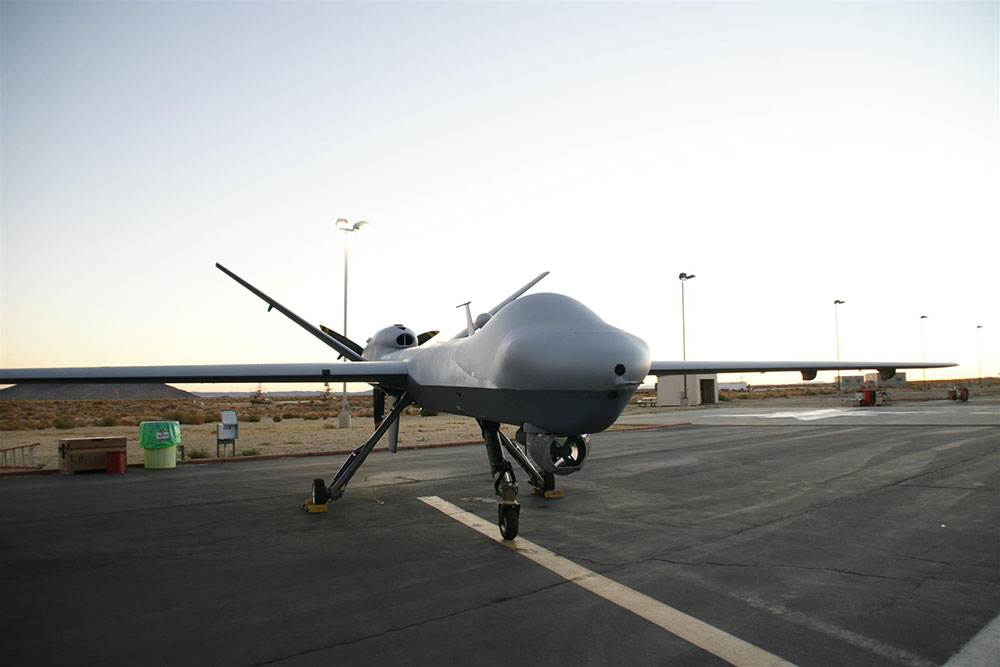Due Regard Radar (DRR)

The Due Regard Radar (DRR) is an air-to-air collision avoidance radar that gives Remotely Piloted Aircraft (RPA) the ability to detect and track air traffic within the same field of view (FOV) as manned aircraft. DRR originated from its initial Engineering Development Model (EDM) in late 2014 and entered pilot production in late 2015. The EDM DRR played a crucial role in assisting the Federal Aviation Administration (FAA) in establishing the DO-366 Minimal Operational Performance Standards (MOPS), which enable RPA to operate in both national and international airspace. As a critical component of GA-ASI’s Detect and Avoid (DAA) System architecture, the DRR is key in ensuring the safe operation of RPA in both national and international airspace.
Equipped with two Active Electronically Scanned Array (AESA) antennas and a Radar Electronics Assembly (REA), the DRR tracks cooperative and non-cooperative aircraft, provides collision avoidance capabilities on board the RPA, and allows pilots to maintain safe separation from other air traffic in coordination with Air Traffic Control.
- AESA technology allows the RPA to track multiple targets while continuously scanning for new aircraft.
- DRR features a tactical weather detection capability, interleaved with the traffic surveillance mode, ensuring no impact on the radar’s aircraft tracking performance.
The DRR is in regular production and is currently deployed in various customer RPA, including India’s MQ-9A Block 5 and the Japan Coast Guard’s MQ-9B SeaGuardian®. It is also part of a formal test campaign led by the United States Marine Corps.

Features/Benefits:
- High-Performance AESA
- Air-cooled antennas and REA
- Detects and tracks any aircraft in FOV, regardless of their onboard equipment
- Feeds tracks through DAA to RPA pilots
- Enables due regard operations in international airspace
- Facilitates full and safe integration of RPA into the U.S. National Airspace System (NAS)